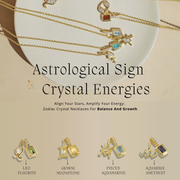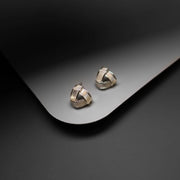What Is Jadeite?
Jadeite is one of two minerals (along with nephrite) officially recognized as jade. Renowned for its vibrant colors and glass-like brilliance, it’s the rarer and more valuable form of jade. For centuries, it’s been cherished in Asian cultures as a symbol of purity, protection, and prosperity.
Key Characteristics:
-
Composition: A sodium-rich pyroxene mineral.
-
Hardness: 6.5–7 on the Mohs scale (durable but can chip if struck).
-
Colors: Green, lavender, red, yellow, white, and black.
-
Texture: Smooth, polished surfaces with a waxy or glassy luster.
-
Rarity: High-quality jadeite is 100x rarer than diamonds.

Jade's Benefits
Ward off evil spirits and protect the body
Jade has been an auspicious object since ancient times. Jade bracelets were sacred "sacrifices" a long time ago, used as a medium to worship the heavens and the earth, and to ask for the gods' protection and blessings. Therefore, people believe that wearing jade jewelry can relieve fatigue, protect oneself from disasters, turn misfortunes into good fortune, and cure diseases and prolong life.
Meditation
Jade bracelets originated in the Qing Dynasty and were regarded as sacred objects. They were the jewelry worn by the imperial concubines when they chanted scriptures and prayed for blessings. Therefore, it contains a deep Buddhist culture and has the effect of calming the mind, stabilizing emotions, and making the mind peaceful. In addition, the cool touch of jade also has a soothing effect on the wearer.
Self-cultivation
Jade has been a symbol of noble purity, elegance, luxury, peace and happiness since ancient times. It can also cultivate people's sentiments and cultivate their character. Jade is a lucky thing. Long-term wearing will be permeated with the breath of jade, and the wearer will slowly be infected with the characteristics of jade - warm and moist like jade.
Stimulate potential
The pure energy of jade helps people have a broad worldview and will not be limited to their own subjective thoughts. When creativity encounters a bottleneck, jade can help people burst out with inspiration and find new ideas. Its unique magnetic field can also make people concentrate and enhance their responsiveness, thereby awakening people's potential.
Regulate human body functions
From a scientific point of view, jade contains trace elements such as zinc, magnesium, copper, chromium, and manganese that are beneficial to the human body. They can be absorbed by the human body during wearing, which is beneficial to physical and mental health, thereby achieving the effect of regulating body functions and improving immunity.

Jadeite Colors & Their Symbolism
Jadeite’s value and meaning vary by color:
-
Green: The most iconic shade, symbolizing growth, health, and wealth.
-
Lavender: Represents spiritual awakening and emotional healing.
-
Red/Yellow: Linked to joy, vitality, and power (popular in royal jewelry).
-
White: Embodies purity, innocence, and new beginnings.
-
Black: Offers grounding and protection from negativity.
How Much Is Jadeite Worth?
Jadeite’s price ranges wildly based on quality:
-
Imperial Green (Top Grade): Up to $3 million per carat.
-
Fine Lavender: 50,000 per carat.
-
Commercial Grade: 500 per carat.
What Determines Value?
-
Color: Vivid, even hues (especially green) are most valuable.
-
Translucency: The more transparent, the higher the price.
-
Origin: Burmese jadeite (Myanmar) is the gold standard.
-
Craftsmanship: Intricate carvings or flawless jadeite bracelets add value.
Where Is Jadeite Found?
Most high-quality jadeite comes from:
-
Myanmar (Burma): Produces 95% of the world’s finest jadeite, including Imperial Green.
-
Guatemala: Known for blue-green "Olive Jade" and mottled varieties.
-
Japan, Russia, USA: Smaller deposits of lower-grade stones.
Ethical Note: Burmese jadeite mining has faced criticism over environmental and human rights issues. Always buy from certified, ethical sources.
Jadeite Bracelets: More Than Jewelry
A jadeite bracelet is a cultural treasure in Asia. Here’s why:
-
Protection: Believed to absorb negative energy and prevent accidents.
-
Health: Worn tight on the wrist to pulse points for healing energy.
-
Status: High-grade jadeite signifies wealth and refined taste.
Tip: Look for bracelets with even color and no visible cracks.

Quality factors of jade
Regarding the quality factors of jade, you will hear a basic saying in the market, that is, "type, water, color, ground, and workmanship". Generally speaking, when buying jade, many people will evaluate it based on these five points.
Texture
The "type" of jade means texture, which is the most basic description of a jade jewelry, including the fineness, uniformity, density and particle size of the crystallization of the internal particles of jade. If it is divided only by these factors, jade can be roughly divided into glass type, ice type, glutinous type, bean type, etc. from high to low. These are the commercial names commonly used in the market. Undoubtedly, when all other conditions are the same, the cleaner the inside and the finer the grains, the higher the economic value of the jade.
But in fact, there are so many names and classifications of jade in the business that it would take three days and three nights to describe them all. Therefore, the following is an explanation based on several of the more common types:
Glass type: As the name suggests, it is jade that is as clear and transparent as glass. It is the most transparent grade of jade, with a pure and fine texture, dense crystal grains, and no impurities.
Ice type: The characteristic of ice type is that the outer surface is very shiny, translucent to transparent, cool like ice, giving people a feeling of ice and jade. Its transparency is slightly lower than that of glass type.
Glutinous jade: Compared with glass jade and ice jade, the crystal particles of glutinous jade are larger, so its transparency is also lower than that of glass jade and ice jade. It is like cooked glutinous rice soup, giving people a feeling of being transparent but not transparent.
Bean jade: Bean jade is the most common in the market. Most of them are short columns, just like beans arranged inside the jade. The interface of these crystals can be seen with the naked eye. Although its transparency is not good, its price is more affordable, so it is also popular with consumers.
Old pit jade and new pit jade: refers to the age of the new and old. Old pit and new pit are distinguished according to the years when people discovered and mined jade. Perhaps everyone often hears about the so-called old pit glass jade, which is actually the industry's recognition of the high quality of old pit jade. But it does not mean that old mines are good and new mines are bad. In fact, old mines and new mines are currently just definitions of the excavation time of some mines. They have nothing to do with the age when jade was formed, nor are they a direct definition of the quality of jade.
Transparency
The transparency of jade is also called "water head", which refers to the ability of light to pass through jade. In layman's terms, it refers to the transparency or moisture level of jade. Jade with good transparency is called "long water head" by experts; it looks crystal clear and gives people a watery feeling; jade with poor transparency is called "short water head" by experts, and looks dry and dull, giving people a dry feeling, and has less viewing value.
Color
When it comes to the color of jadeite, many people may think that jadeite is green. But in fact, jadeite contains metal elements such as iron, manganese, vanadium, and titanium, which leads to rich and diverse colors, including purple, blue, red, orange, yellow, brown, white, black and gray. However, among the many colors, green jadeite is the most popular in the market and is also the most valuable.
Generally speaking, there are four standards to measure the color of green jadeite, namely "pure, bright, rich, and even", as explained below:
Pure: refers to the purity of the color. The hue of green jadeite varies from yellow to blue, and pure green without any mixed colors is the best.
Bright: refers to the vividness and brightness of the color. Like other colored gemstones, the brighter the color, the higher the value of the jadeite.
Rich: refers to the saturation of the color, that is, the color's intensity and depth. If the saturation is too high, the green will be very deep, even dark; if the saturation is too light, it will be close to colorless, so it is necessary to have a perfect ratio, with the color being rich but not dark.
Even: refers to the uniformity of color distribution, also known as "even" or "harmonious". Since jade is composed of countless tiny mineral crystals, uneven color is a characteristic of jade. Natural green jade may be distributed in the form of dots, threads, blocks, and flakes. Generally speaking, jade that reaches "full green" can be considered a high-end product.
Green jade can be classified and described in many ways according to its color, such as imperial green, emerald green, seedling green, emerald green, bean green, spinach green, shallow water green, etc. In fact, these descriptions are not the most important. The main thing is to see whether there are other tones in the green. For example, gray and black tones will make green jade have a color cast; white tones will dilute the green of jade and reduce its saturation. In short, for all colors of jadeite, the brighter and more uniform the color, the higher its value.
Caring for Your Jadeite
-
Clean: Wipe gently with a soft cloth and mild soapy water.
-
Avoid: Harsh chemicals, extreme heat, and hard impacts.
-
Recharge: Bury in soil or place under moonlight to refresh its energy.







